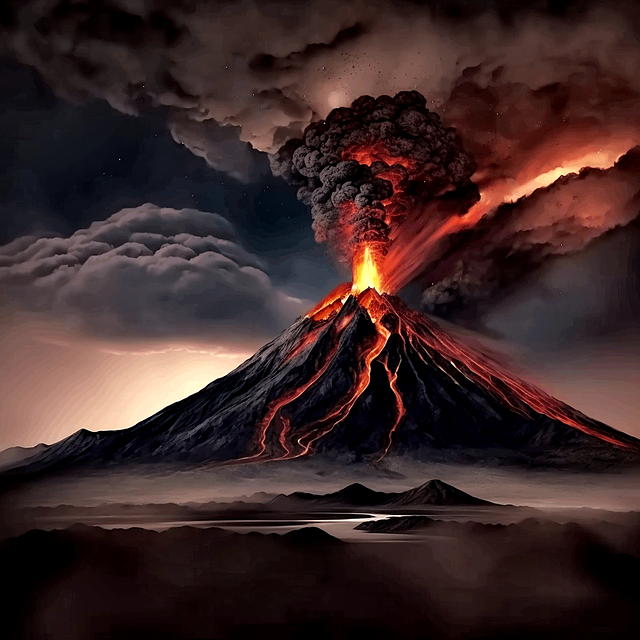What is the difference between a sea and an ocean?

Fascinated by the vastness of the ocean and the allure of the sea, led to the question: what is the difference between a sea and an ocean? Oceans are water bodies, stretching across huge distance and depths, seas are typically shallower and enclosed with varying degrees.. It is like unraveling the mysteries of Earth’s aquatic realms.
In this article, we delve into the geographical, ecological, and cultural aspects that differentiate seas from oceans, offering a deeper understanding of these vital aquatic environments. So, dive in with us as we navigate the depths of the sea and the expanse of the ocean, discovering the wonders that lie beneath the surface.
Seas and Oceans Defined
Seas and oceans are large bodies of saline water that differ primarily in size, depth, and characteristics. While oceans are the largest bodies of water on Earth, seas are smaller, partially enclosed bodies of water that are usually connected to oceans.
Importance of Understanding the Distinction
Recognizing the disparity between seas and oceans is essential for various aspects of human life, including navigation, conservation efforts, and economic activities. It enables us to comprehend the unique ecological, cultural, and economic significance of these bodies of water.
Geographical Characteristics
Oceans encompass the majority of the Earth’s surface, constituting vast expanses of water that connect continents and regulate global climate patterns. There are five recognized oceans: the Pacific, Atlantic, Indian, Southern (or Antarctic), and Arctic oceans.
Exploring the World’s Major Oceans
The Pacific Ocean, spanning from the Arctic to the Antarctic, is the largest and deepest ocean, covering approximately one-third of the Earth’s surface. The Atlantic Ocean, the second-largest, is known for its extensive coastlines and crucial role in global shipping routes.
The Indian Ocean, characterized by its warm waters and diverse marine life, is essential for trade and commerce. The Southern Ocean surrounds Antarctica, playing a vital role in regulating the Earth’s climate. The Arctic Ocean, covered by sea ice, is the smallest and shallowest ocean, yet it holds immense ecological importance.
Depth and Terrain: Delving into Oceanography
Oceanography explores the physical and chemical properties of oceans, including their depths, currents, and marine life. Oceans exhibit significant variations in depth, with deep trenches, such as the Mariana Trench, reaching depths exceeding 10,000 meters.
The ocean floor features diverse terrain, including underwater mountains, known as seamounts, and vast plains known as abyssal plains.
Geographic Features: Mountains, Trenches, and Ridges
The ocean floor is characterized by various geographic features, including mid-ocean ridges, where tectonic plates diverge, creating underwater mountain ranges.
Deep-sea trenches, such as the Challenger Deep in the Mariana Trench, plunge to incredible depths, offering insights into Earth’s geology and biodiversity. Additionally, underwater volcanoes, or seamounts, dot the ocean floor, serving as hotspots for marine life.
Understanding Seas
-
How Seas differ from Oceans
Seas are smaller bodies of saltwater that are partially enclosed by land. Unlike oceans, which are interconnected, seas are often bordered by one or more continents and may be partially or entirely enclosed by land.
-
Regional Seas from Around the World
Examples of regional seas include the Mediterranean Sea, which is bordered by Europe, Asia, and Africa, and the Caribbean Sea, nestled between North and South America. These seas play crucial roles in regional economies, tourism, and biodiversity conservation.
-
Formation and Characteristics Influencing Seas
Seas can form through various geological processes, including the flooding of continental shelves during periods of sea-level rise or the formation of rift valleys. Factors such as tides, currents, and coastal geography influence the characteristics of seas, shaping their ecosystems and human interactions.
Physical Properties
-
Oceans Salinity Variations across the Globe
Ocean salinity varies depending on factors such as evaporation rates, precipitation, and freshwater input from rivers and glaciers. Salinity levels are typically higher in subtropical regions with high evaporation rates and lower in Polar Regions with significant freshwater input from melting ice.
-
Seas Factors Affecting Salinity
Seas exhibit varying salinity levels influenced by factors such as proximity to rivers, evaporation rates, and oceanic currents. Coastal seas may experience fluctuations in salinity due to freshwater influx from rivers and estuaries, impacting marine life and ecosystems.
Temperature Variations
-
Ocean Temperature Zones from Polar to Tropical
Oceans exhibit distinct temperature zones, ranging from Polar Regions with frigid waters to tropical regions with warm temperatures year-round. These temperature variations influence global climate patterns, ocean currents, and marine biodiversity.
-
Sea Temperature Factors Influencing Thermal Patterns
Seas experience temperature fluctuations influenced by factors such as sunlight exposure, ocean currents, and geographic location. Coastal seas may exhibit seasonal variations in temperature, affecting marine habitats and species distributions.
Ecological Diversity
-
Exploring Coral Reefs and Kelp Forests
Oceans harbor diverse ecosystems, including coral reefs, which are hotspots of biodiversity and support a vast array of marine species. Coral reefs are vital for coastal protection, fisheries, and tourism, yet they are threatened by climate change and human activities.
-
Keystone Species: Vital Roles in Ocean Ecosystems
Keystone species play crucial roles in maintaining the balance and stability of ocean ecosystems. Examples include apex predators like sharks, which regulate prey populations, and keystone habitat engineers like oysters, which create and maintain essential marine habitats.
Marine Habitats in Seas
-
Coastal Ecosystems: Mangroves, Estuaries, and Salt Marshes
Seas are home to diverse coastal ecosystems, including mangrove forests, estuaries, and salt marshes, which provide vital habitats for marine life and serve as buffers against coastal erosion and storm surges.
-
Unique Species Adaptations: Thriving in Dynamic Sea Environments
Marine species have evolved unique adaptations to thrive in dynamic sea environments, from deep-sea organisms with bioluminescent traits to intertidal species capable of withstanding extreme temperature fluctuations and wave action.
Economic Importance of Oceans
-
Fisheries: Sustaining Livelihoods and Food Security
Oceans support thriving fisheries that provide sustenance and livelihoods for millions of people worldwide. Sustainable management practices are essential to ensure the long-term viability of fish stocks and the health of marine ecosystems.
-
Shipping and Transportation: Global Trade Routes
Oceans serve as critical arteries of global trade and transportation, facilitating the movement of goods and commodities between continents. Maritime shipping routes connect major ports and economic centers, driving economic growth and development.
Utilization of Seas
-
Tourism and Recreation: Coastal Attractions and Activities
Coastal seas attract millions of tourists each year, offering opportunities for swimming, snorkeling, diving, and beachcombing. Coastal tourism contributes significantly to local economies but also poses challenges such as habitat degradation and pollution.
-
Industrial Uses: Offshore Energy Production and Mining Operations
Seas are increasingly utilized for offshore energy production, including oil and gas extraction, wind energy farms, and tidal power generation. Additionally, deep-sea mining operations target valuable minerals and resources on the ocean floor, raising concerns about environmental impacts and sustainability.
Ocean Conservation Efforts
-
Threats to Marine Life: Pollution and Overfishing
Marine ecosystems face numerous threats, including pollution from plastic debris, oil spills, and chemical runoff, as well as overfishing and destructive fishing practices. Conservation efforts are essential to mitigate these threats and preserve marine biodiversity
-
Marine protected areas (MPAs)
User are established to safeguard critical marine habitats and species, promoting biodiversity conservation and ecosystem resilience. These protected areas serve as refuges for threatened marine species and contribute to the recovery of depleted fish stocks. Additionally, restoration projects aim to rehabilitate degraded marine ecosystems through measures such as coral reef restoration, mangrove reforestation, and marine habitat rehabilitation.
Seas under Pressure
-
Pollution Hotspots: Addressing Pollution in Coastal Areas
Coastal seas are particularly vulnerable to pollution from land-based sources, including industrial discharge, agricultural runoff, and urban sewage. These pollutants degrade water quality, harm marine life, and pose risks to human health. Efforts to address coastal pollution include wastewater treatment, pollution monitoring, and public awareness campaigns.
-
Climate Change Impacts: Rising Sea Levels and Ocean Acidification
Climate change poses significant threats to seas and oceans, including rising sea levels, ocean acidification, and extreme weather events. Melting polar ice caps contribute to sea-level rise, threatening coastal communities and habitats. Ocean acidification, resulting from increased carbon dioxide absorption, impacts marine ecosystems and species, particularly those reliant on calcium carbonate for shell formation.
Cultural Significance
-
Oceans in Culture and Mythology
Throughout history, oceans have held profound cultural significance, inspiring myths, legends, and artistic expressions. Across cultures, the sea symbolizes mystery, adventure, and the unknown, serving as a backdrop for tales of exploration, heroism, and maritime folklore.
- Sea Legends and Folklore: Tales of the Deep
Legends and folklore abound with stories of sea monsters, mermaids, and lost civilizations beneath the waves. These tales reflect humanity’s fascination with the sea and its role as a source of wonder, fear, and inspiration.
-
Maritime Traditions: Nautical Symbols and Superstitions
Maritime traditions and superstitions have shaped seafaring cultures for centuries, influencing ship design, navigation practices, and sailor rituals. Nautical symbols such as anchors, lighthouses, and compass roses hold symbolic meanings and convey themes of safety, guidance, and adventure.
Seas in Human History
-
Exploration and Discovery: Sea Voyages and Expeditions
Seas have been integral to human history, facilitating exploration, trade, and cultural exchange. From ancient seafaring civilizations to the age of exploration, maritime voyages have expanded geographical knowledge, connected distant lands, and shaped the course of human civilization.
-
Trade and Commerce: Maritime Routes Shaping Global History
Maritime trade routes have been vital conduits of commerce, linking continents and facilitating the exchange of goods, ideas, and cultures. Historic trade routes such as the Silk Road, Spice Route, and Transatlantic Slave Trade have left indelible marks on global history and economics.
Conclusion
Understanding the distinctions between seas and oceans is paramount for appreciating the vastness, complexity, and importance of Earth’s marine environments. From their geographical features to their ecological diversity and cultural significance, seas and oceans shape our planet’s identity and sustain life as we know it. By preserving and protecting these precious ecosystems, we can ensure a sustainable future for generations to come.









